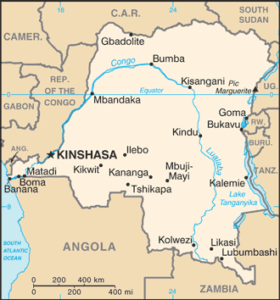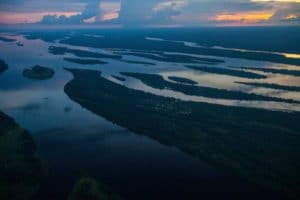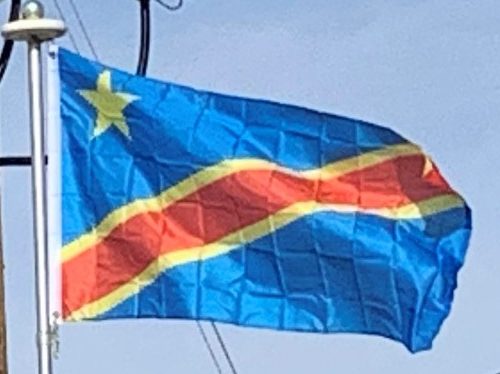
On 17 May 1997, Laurent-Désiré Kabila, a leader of Tutsi forces from the province of South Kivu, became President after Mobutu fled to Morocco, reverting the country’s name to the Democratic Republic of the Congo. Tensions between President Kabila and the Rwandan and Tutsi presence in the country led to the Second Congo War from 1998 to 2003. Ultimately, nine African countries and around twenty armed groups became involved in the war, which resulted in the deaths of 5.4 million people. The two wars devastated the country. President Laurent-Désiré Kabila was assassinated by one of his bodyguards on 16 January 2001 and was succeeded eight days later as President by his son Joseph.
The Democratic Republic of the Congo is extremely rich in natural resources but has had political instability, a lack of infrastructure, issues with corruption and centuries of both commercial and colonial extraction and exploitation with little holistic development. Besides the capital Kinshasa, the two next largest cities Lubumbashi and Mbuji-Mayi are both mining communities. DR Congo’s largest export is raw minerals, with China accepting over 50% of DRC’s exports in 2012. In 2016, DR Congo’s level of human development was ranked 176th out of 187 countries by the Human Development Index. As of 2018, around 600,000 Congolese have fled to neighboring countries from conflicts in the center and east of the DRC. Two million children risk starvation, and the fighting has displaced 4.5 million people. The sovereign state is a member of the United Nations, Non-Aligned Movement, African Union, and COMESA.
Etymology:
The Democratic Republic of the Congo is named after the Congo River, which flows throughout the country. The Congo River is the world’s deepest river and the world’s second largest river by discharge. The Comité d’études du haut Congo (“Committee for the Study of the Upper Congo”), established by King Leopold II of Belgium in 1876, and the International Association of the Congo, established by him in 1879, were also named after the river.

The Congo River itself was named by early European sailors after the Kingdom of Kongo and its Bantu inhabitants, the Kongo people, when they encountered them in the 16th century. The word Kongo comes from the Kongo language (also called Kikongo). According to American writer Samuel Henry Nelson: “It is probable that the word ‘Kongo’ itself implies a public gathering and that it is based on the root konga, ‘to gather’. The modern name of the Kongo people, Bakongo was introduced in the early 20th century.
The Democratic Republic of the Congo has been known in the past as, in chronological order, the Congo Free State, Belgian Congo, the Republic of Congo-Léopoldville, the Democratic Republic of the Congo and the Republic of Zaire, before returning to its current name the Democratic Republic of the Congo.
At the time of independence, the country was named the Republic of Congo-Léopoldville to distinguish it from its neighbour the Republic of the Congo-Brazzaville. With the promulgation of the Luluabourg Constitution on 1 August 1964, the country became the DRC, but was renamed to Zaire (a past name for the Congo River) on 27 October 1971 by President Mobutu Sese Seko as part of his Authenticité initiative.
